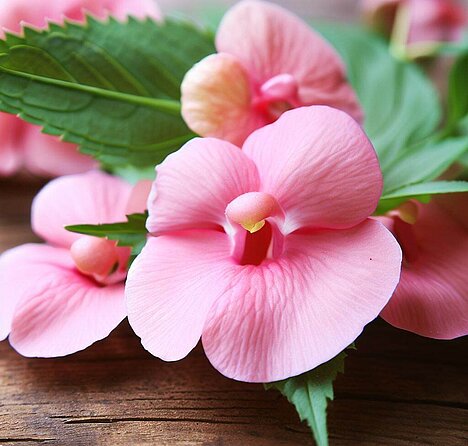Himalayan balsam

Advantages of balsam
Himalayan balsam also has some positive properties that you should know about. For one, it provides an important food source for bees and other pollinators, which are threatened in many areas. Secondly, it can also be used as a medicinal plant. The leaves and flowers contain flavonoids, tannins and bitter substances that can have anti-inflammatory, antibacterial and antioxidant effects. The plant can help with skin problems such as eczema, wounds or insect bites. It can also provide relief for gastrointestinal complaints or colds.
Disadvantages of balsam
However, balsam also has some negative effects that you should be aware of. On the one hand, it displaces native flora and reduces biodiversity. Secondly, it can be dangerous for dogs. The plant contains oxalic acid, which is poisonous in high doses. If your dog eats or chews too much of the plant, it can show signs of poisoning such as vomiting, diarrhea, tremors or convulsions. The seeds of the plant can also get into your dog's fur or eyes and cause irritation or injury.
How you should deal with balsam
If you take your dog for a walk and see balsam, you should take a few precautions. Firstly, you should keep your dog on a lead and prevent him from sniffing or nibbling at the plant. Secondly, you should check your dog thoroughly after the walk and remove any seeds from their fur or eyes. If you have your own garden, you should remove or contain balsam if possible. You can pull out or mow the plant before it flowers or forms seeds. However, make sure you wear gloves and do not dispose of the plant remains in the compost.
Balsam is a plant with advantages and disadvantages. It can be beneficial to insects and humans, but also harmful to the environment and dogs. If you are well informed and careful, you can deal with this plant and protect your dog.
If you notice any signs of hypersensitivity or poisoning in your dog, you should see your vet immediately. We are not a substitute for a vet, but we try to be as accurate as possible. Every dog reacts differently and we recommend you get a second opinion or consult your vet if in doubt.
Stay healthy and take good care of your four-legged friend!😊
Similar to Himalayan balsam
Balsam belongs to the balsam family and is originally from Asia. There are various types of balsam, which differ in size, color and shape. The best known are the glandular balsam (Impatiens...
Balsam is a fast-growing annual plant known for its showy pink to purple flowers and characteristic pod-like fruits. It prefers moist habitats and is often found along riverbanks, in woodlands and...
Lesser balsam is an annual plant characterized by its delicate, pale yellow to orange flowers and its distinctive pod-like fruits. These fruits 'pop' open to disperse their seeds widely when ripe or...
Japanese knotweedis not toxic to dogs, cats or humans. It contains many valuable ingredients such as resveratrol, quercetin, rutin and vitamin C. These can have an antioxidant, anti-inflammatory and...



